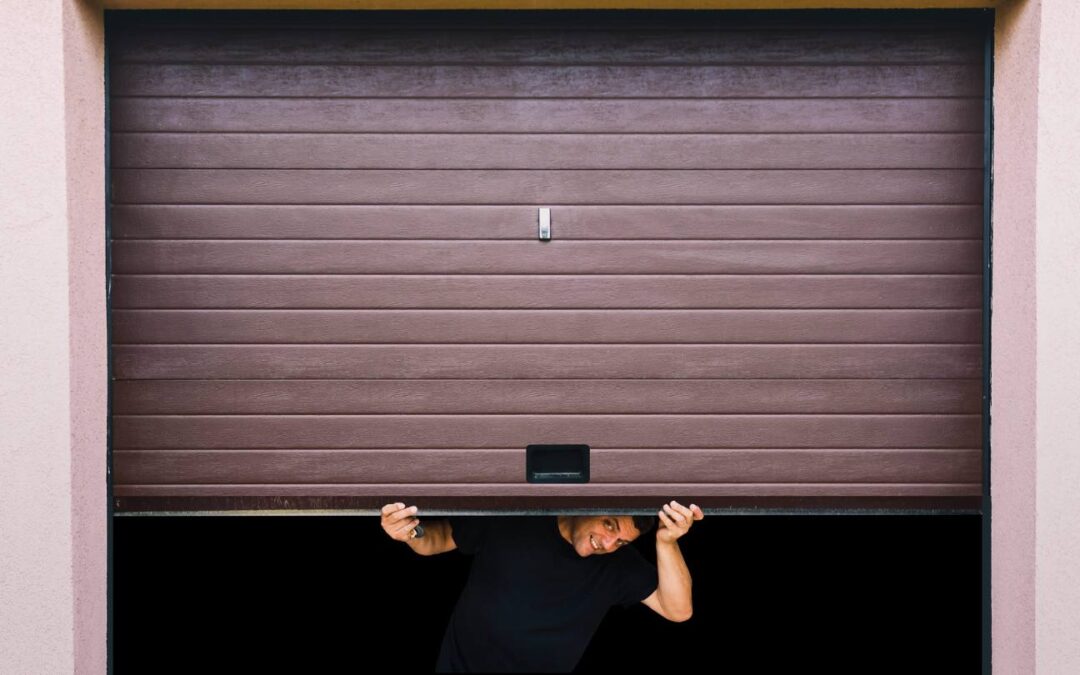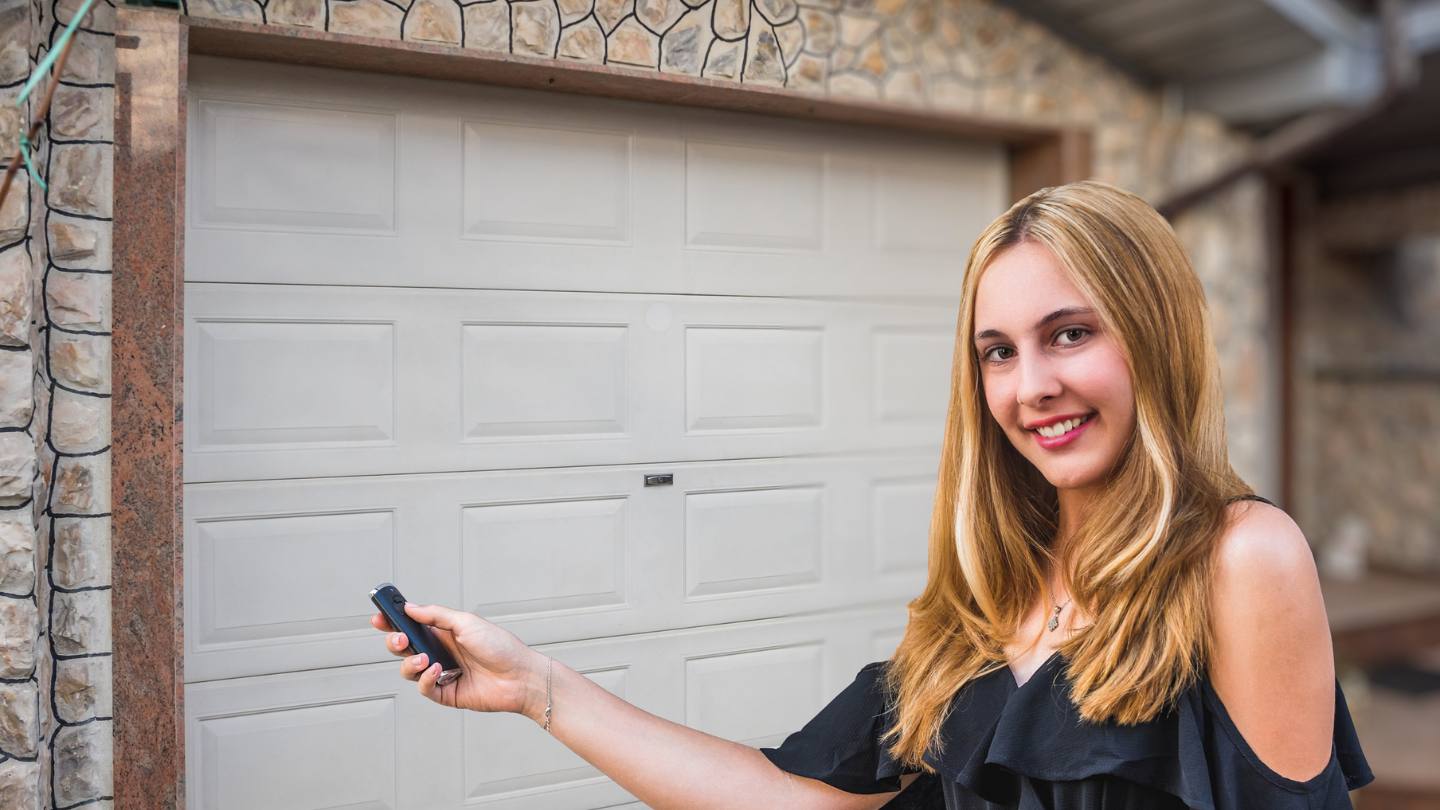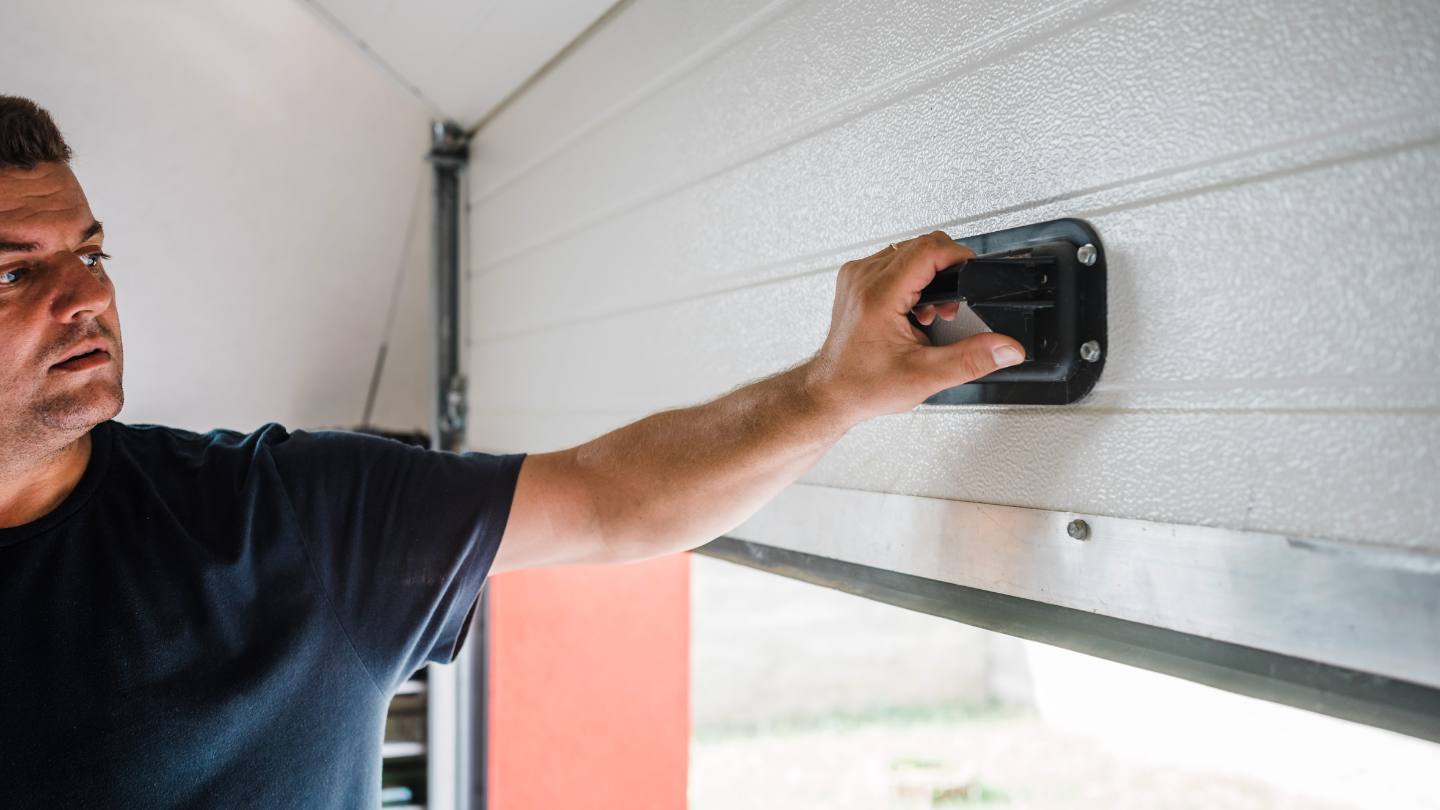Your garage can be where you park your cars, a location for all your tools, equipment, and lawn care tools that you only use during the summer, a place to shop projects, and additional storage space. Some people use their garage as a place for their pets.
Our furry friends make our lives happier and more fun, but they also have their things and storage needs. Pet owners need to keep their garages clean and pet-friendly.
But if you prepare your garage first, your pets will be safe there. Because of the other things you keep in your garage, it could be a dangerous place for your pets.
In this detailed guide, we’ll talk about how to set up a storage system for your garage that meets your pet’s needs while keeping the area organised and free of clutter.
How to Make Your Garage Friendly to Pets
Your garage is an important part of your home. It may be even more important in the winter when your car, tools, and other supplies can go there to stay out of the cold. But the same things we use to keep our vehicles and houses running well can be dangerous for our pets.
Do you let your pet go into the garage? Whether your pet has access through the interior of the house or from the yard through a pet door, it’s important to ensure this space is safe for your four-legged family members.
Creating a Pet-Friendly Location
Before you start organising your garage, think about what your pet needs. Think about the kind and size of your pet, what they eat, and any regular tools or accessories they use. This evaluation will help you plan how to store things in your garage.
Find out how to make your garage safe for your pets below.
Remove Toxins
The initial step is to eliminate any dangerous things in the garage. If you keep dangerous things in your garage, your pets may eat or breathe them in. You might not know that your garage has pollutants, so the most effective way to find out is to have it checked.
Some products’ labels will tell you how to store them correctly. Materials like paint and some cleaners must be kept at the right temperature. If they are kept at too high or too low of a temperature, they will lose their shape, and you won’t be able to make use of them again. When putting chemicals away in your garage, make sure to read every label carefully.
Cabinets on the wall are an excellent place to keep dangerous chemicals. So your pets or kids won’t be able to get to them. Make sure there are latches or locks on these cabinets. Even though you shouldn’t leave your pets alone in the garage, you might not always be able to keep an eye on them. You can be sure your pets won’t get into the chemicals if you store them effectively up and out of the way.
Car Supplies
Contrary to what most people think, the most dangerous thing about a car is not the car itself but the tools you use to take good care of it. Veterinarians say that antifreeze is the most hazardous chemical cats and dogs can eat.
Antifreeze is dangerous to pets because, unlike other chemicals like rat poison, it smells sweet, so pets are drawn to it. The best way to make the garage safe for pets is to put all your dangerous garage supplies and car supplies on a high shelf, the prefered one which can be shut off with little doors.
Decluttering
Since people store many different things in garages, they tend to get messy quickly. Most of the time, it’s a wide range of things, like chemicals, other dangerous items, tools, or other things that could hurt someone. Make sure to clean the garage and remove anything that doesn’t need to be there. Look around to ensure your pet can’t get to anything that could hurt it.
Another good thing about getting rid of things is that your furry friend will have room to move around. Removing things you don’t need can keep the area cleaner and better organised. It will also make things easier if you can find what you need quickly and don’t waste time looking for it. If your garage is old and needs work, talk to garage builders about your options for a garage remodel.
Ensure Proper Ventilation
Most garages don’t have good ventilation, which can expose people to dangerous vapours or gases. Your garage should have plenty of airflow due to the large windows you can open. Also, you may put in fan vents or open the garage door to eliminate any fumes or dangerous gases that have built up in the garage. It lets light and clean airflow into the garage, which is good for a pet’s health.
Secure Tools and Sharp Objects
Pets can get hurt by sharp things. Keep lawnmowers, rakes, and saws away from where your pet plays. Sharp tools shouldn’t be within reach of pets. Tool covers are always a good idea in places where you keep tools. Sharp things should be covered with tool covers so your dog can’t play with them.
Make Use of Airtight Containers
A clean, well-organised garage for pets will help you and your pets. Use airtight containers to keep things more organised and for health reasons. Pests won’t be able to get to the food or other things you store, and neither will your pets. Pests such as mice, rats, and bugs can be drawn to food and other things. Only invite people you want by giving them a reason for coming in. Pests are not good for your property, your family, or pets in any way, so don’t let them in.
Ensure that any food you want to keep in your garage is in an airtight container. Check on them occasionally to ensure they haven’t been broken or cracked. You should get new containers as soon as you see signs of wear and tear. These steps will help make your garage pet-friendly because they will keep your pets from eating too much and keep animals away.
Provide Comfortable Bedding
To make your garage pet-friendly, you’ll need to organise the storage space, add ventilation, and give the pets enough room to rest if needed. If you will keep pets in your garage for a long time, give them a comfortable place to sleep. You can put blankets or pillows on the floor for the pets to sleep on to keep them warm and comfortable.
Sweep the Garage Regularly
It’s a good idea to sweep the garage at least once a week. It catches things like nails, broken glass, and other things that could be dangerous. If you sweep the garage regularly and have cleaned up all the junk in the garage, it shouldn’t take long.
Are Dogs Allowed to Live In A Garage?
Dogs can reside in garages as long as the garage has a way to control the temperature in the summer and winter. The dogs should only be kept within the garage for a short period. It’s best to keep them there when they’re sleeping at night or when you need to leave for a few hours and don’t want them running around your house.
The bottom line is that garages can be good places for dogs to live as long as they are safe and you are an ethical dog owner who doesn’t break the law about animal welfare. If the garage has been turned into a living space, that’s even better because the dog will be less likely to get hurt.
When you get a dog, it must quickly become a part of your family. (Within reason) Treat your dog like a regular family member. You shouldn’t do it if you think keeping your dog in the garage blurs the lines between responsibility and care.
Some irresponsible dog owners will lock their dogs in the garage and forget about it. Dogs are social creatures that need to spend time with people. If you don’t give them this, it’s cruel and will make them unhappy and sick.
How to Tell if Your Dog Shouldn’t Live in the Garage
Determining where a dog should reside in your house can take much work. Some people treat their dogs like family members, and the dogs live with their owners. Some think dogs must reside outside, in a shed, garage, or kennel. People in the third group have dogs that reside both inside and outside.
What’s the best thing for your dog? You should take your dog inside. Dogs that live outside are left in the heat and cold, which can hurt their health. Heat stroke can damage the brain, and dogs that are left outside in hot weather are at risk of becoming dehydrated. Dogs can get blisters and become too cold when it’s snowy or cold outside.
Dogs may be exposed to too hot or cold temperatures, even within a garage. Most garages don’t have climate control, so your dog will get too humid and stuffy in the summer, just like when they’re stuck in a hot car. Sleeping in the garage might be alright in wintertime, but if ice or snow gets in, it might be too cold to leave your dog without a bed.
Conclusion
Garage storage is a crucial part of a home, especially for pets. However, it can also be a dangerous space for pets. To make your garage safe for pets, consider your pet’s needs, their size, food preferences, and regular tools or accessories.
To make your garage safe for pets, remove toxic substances, check for pollutants, and store chemicals correctly. Use cabinets on the wall with latches or locks to keep chemicals out of reach. Store car supplies on high shelves with little doors to prevent pets from getting into them.
Declutter your garage by removing unnecessary items and ensuring your pet can’t access anything that could hurt them. This will keep the area cleaner and better organized. If your garage needs work, consider talking to garage builders about garage remodel options.
By implementing these steps, you can create a safe and organized space for your pets while keeping your garage clean and free of clutter. Remember to prioritize your pet’s needs and consider a garage remodel if necessary.
Proper ventilation is crucial for a garage’s health and safety for pets. Large windows, fan vents, and open garage doors can help eliminate fumes and gases, allowing light and clean airflow. Secure tools and sharp objects away from pets, using tool covers to prevent harm. Use airtight containers to keep food and other items organized and pest-free. Regularly check and replace containers as needed.
Providing comfortable bedding and a comfortable place for pets to sleep is essential. If keeping pets in the garage for extended periods, provide blankets or pillows for comfort. Regularly sweep the garage to catch potential hazards.
Dogs can reside in garages as long as it has temperature control in summer and winter. Keep dogs there when they’re sleeping or when you need to leave for a few hours. However, it’s important to treat dogs like regular family members and avoid separating responsibility and care.
Determining where a dog should reside can be challenging, but it’s best to keep them inside to avoid heat and cold exposure. Dogs exposed to extreme temperatures, such as hot or cold temperatures, may become too hot or cold, making it difficult for them to sleep in the garage. In winter, if ice or snow enters, leaving them without a bed may be too cold.
Content Summary
- Garages can serve multiple purposes, including pet shelters.
- Pets, especially dogs, come with their storage requirements.
- Ensuring a pet-friendly garage is essential for pet safety.
- Items stored in the garage could pose dangers to pets.
- A pet-friendly garage storage system reduces clutter and enhances safety.
- During winter, the garage’s importance increases as a shelter.
- If pets have garage access, ensuring the space is safe is crucial.
- Assessing your pet’s requirements helps in organising garage storage.
- It’s vital to identify and remove toxins from the garage.
- Proper storage of chemicals, adhering to label guidelines, ensures safety.
- Wall cabinets with latches are ideal for storing hazardous chemicals.
- Antifreeze, attractive due to its sweet smell, is dangerous for pets.
- Storing car maintenance items out of pets’ reach is advisable.
- Decluttering the garage makes it safer and more accessible.
- Garages should be periodically assessed for renovations or remodelling.
- Proper ventilation in the garage is essential for pets’ health.
- Items like lawnmowers and sharp tools should be stored securely.
- Airtight containers are useful for organising and ensuring pet safety.
- Such containers prevent pest infestation, protecting both stored items and pets.
- Regular checks on containers for wear and tear are necessary.
- Comfortable bedding can be added to the garage for pets.
- Weekly garage cleaning, especially sweeping, is essential.
- Dogs can live in garages, provided conditions are safe and comfortable.
- Temperature control in garages is crucial for a pet’s welfare.
- Dogs, being social animals, shouldn’t be isolated in garages for extended periods.
- Determining a dog’s living space requires careful consideration.
- Dogs treated as family members often reside inside homes.
- Outdoor living for dogs has its risks, such as exposure to extreme weather.
- Even within garages, temperature fluctuations can be problematic.
- Summer heat in non-ventilated garages can harm pets.
- While garages can be shelters during winters, ensuring warmth is essential.
- Dogs’ health can be impacted by prolonged exposure to cold or heat.
- Dehydration is a risk for dogs left in hot environments.
- Snow or ice in garages during winter can be harmful to dogs without proper bedding.
- Ensuring the garage is pet-friendly safeguards their health and well-being.
- Responsible pet ownership involves creating safe environments, including garages.
- Overlooking the needs of pets in garages can be detrimental.
- Pets require regular interaction and shouldn’t be left isolated.
- A balanced approach to pet housing, considering both safety and companionship, is best.
- Garages transformed into living spaces are generally safer for dogs.
- Treating pets ethically involves ensuring their welfare in all environments.
- Some dog owners might inadvertently neglect their pets in garages.
- Irresponsible confinement of dogs in garages can lead to health issues.
- Dogs have distinct needs, which should guide their housing decisions.
- Blending indoor and outdoor living can be beneficial for dogs.
- Dogs require protection from extreme temperatures and related health risks.
- Excessive humidity in garages during summer can be harmful to dogs.
- A balanced temperature in the garage ensures a dog’s comfort.
- An equipped and well-maintained garage can be a haven for pets.
- Continual assessment of garage conditions optimises pet safety.
Frequently Asked Questions
How can I keep my pet’s food fresh in the garage?
Invest in containers that keep air out and label them with the type of food and the date it will go not good to keep food fresh.
What should I consider when creating a grooming station for my pets in the garage?
Ensure you have a table, a place to bathe, and a place to store grooming supplies when you set up a grooming station.
Are there any safety precautions I should take in a pet-friendly garage?
Keep dangerous things out of reach and consider putting up safety gates to keep people out of certain areas.
What are the benefits of a pet-friendly garage for both pets and owners?
A garage that is good for pets helps you keep your house clean and gives your pets a safe place to hang out.
How can I ensure my garage is both organised and pet-friendly?
Find out what your pet needs, make storage areas for them, and buy the right storage solutions to keep your garage clean and pet-friendly.



